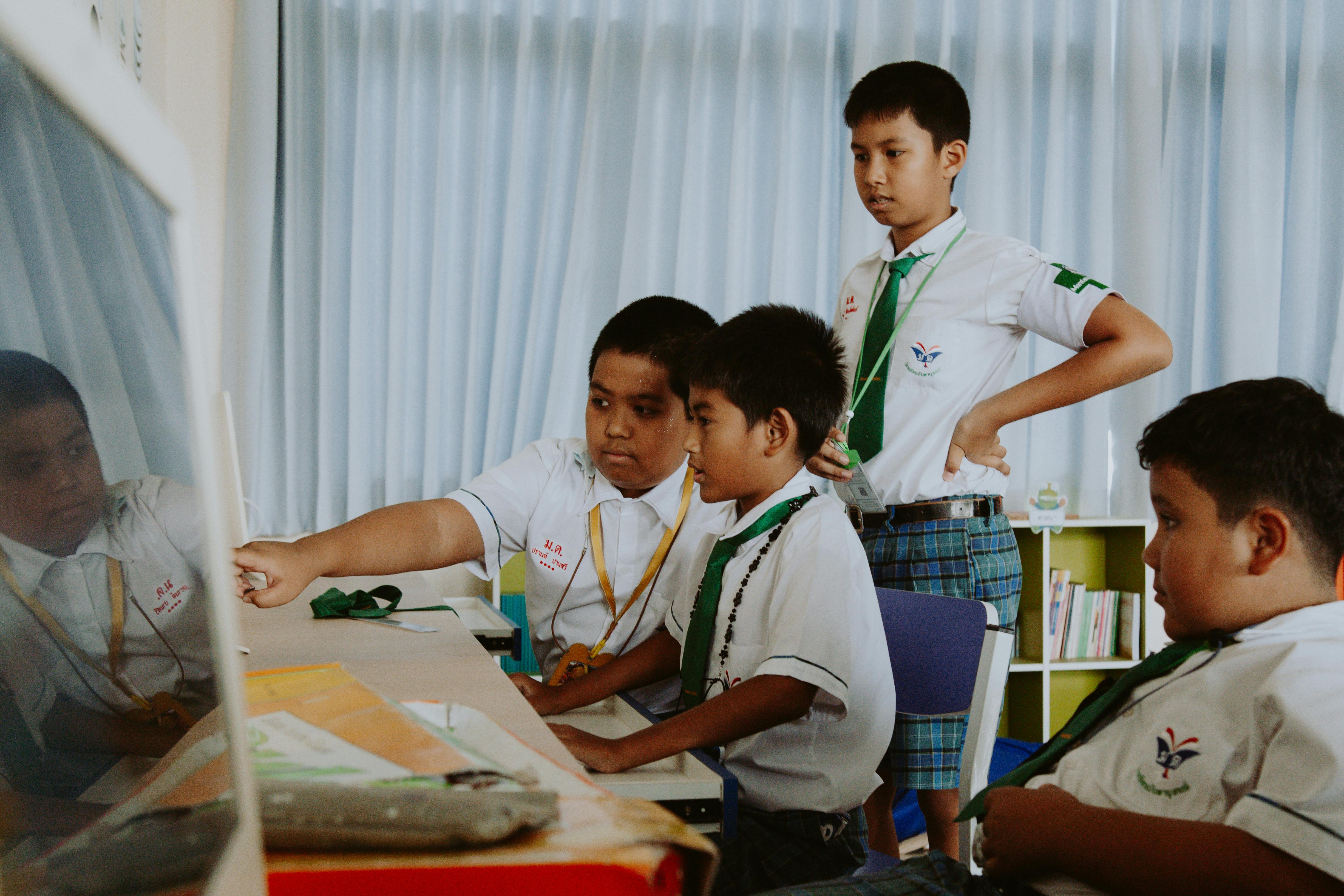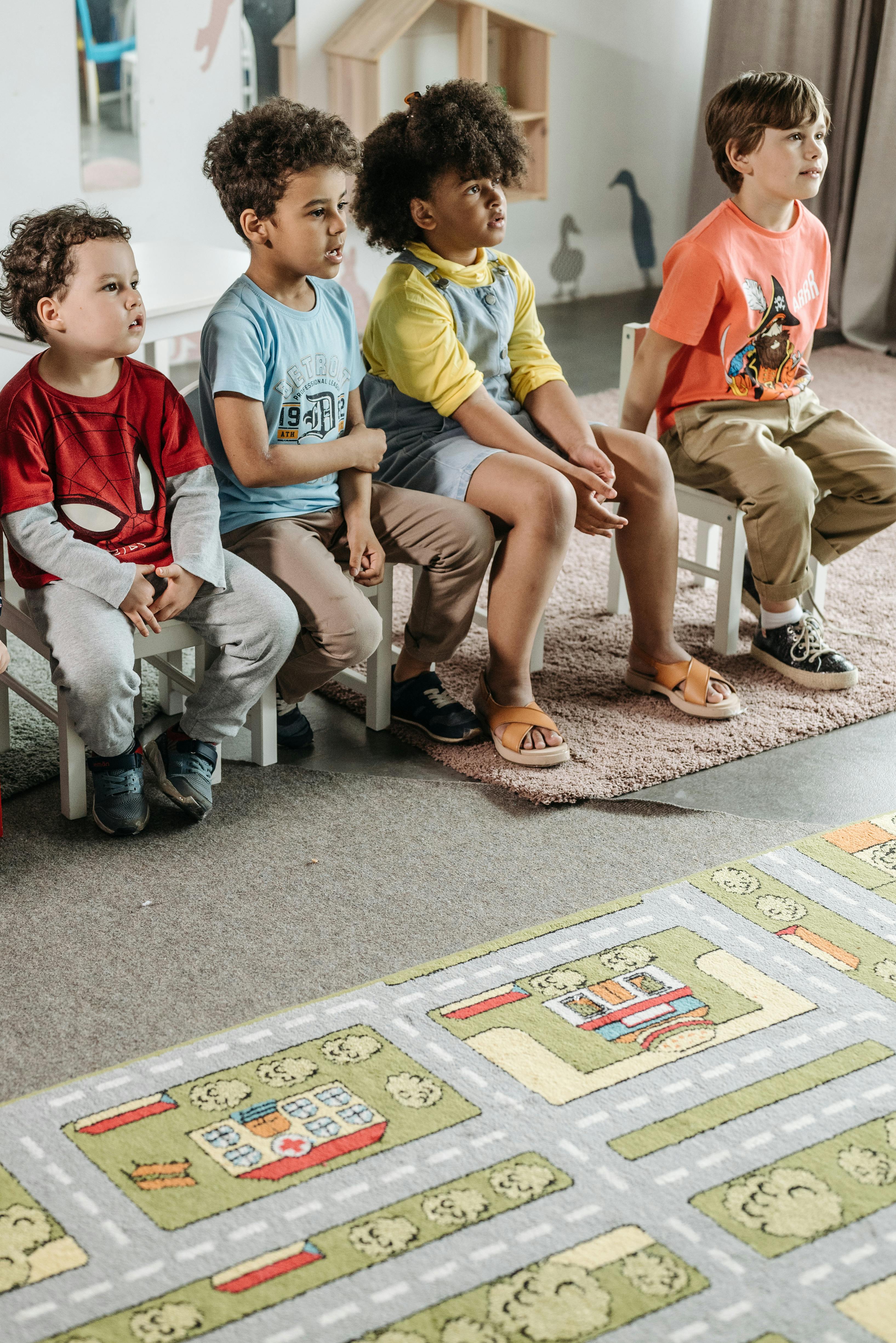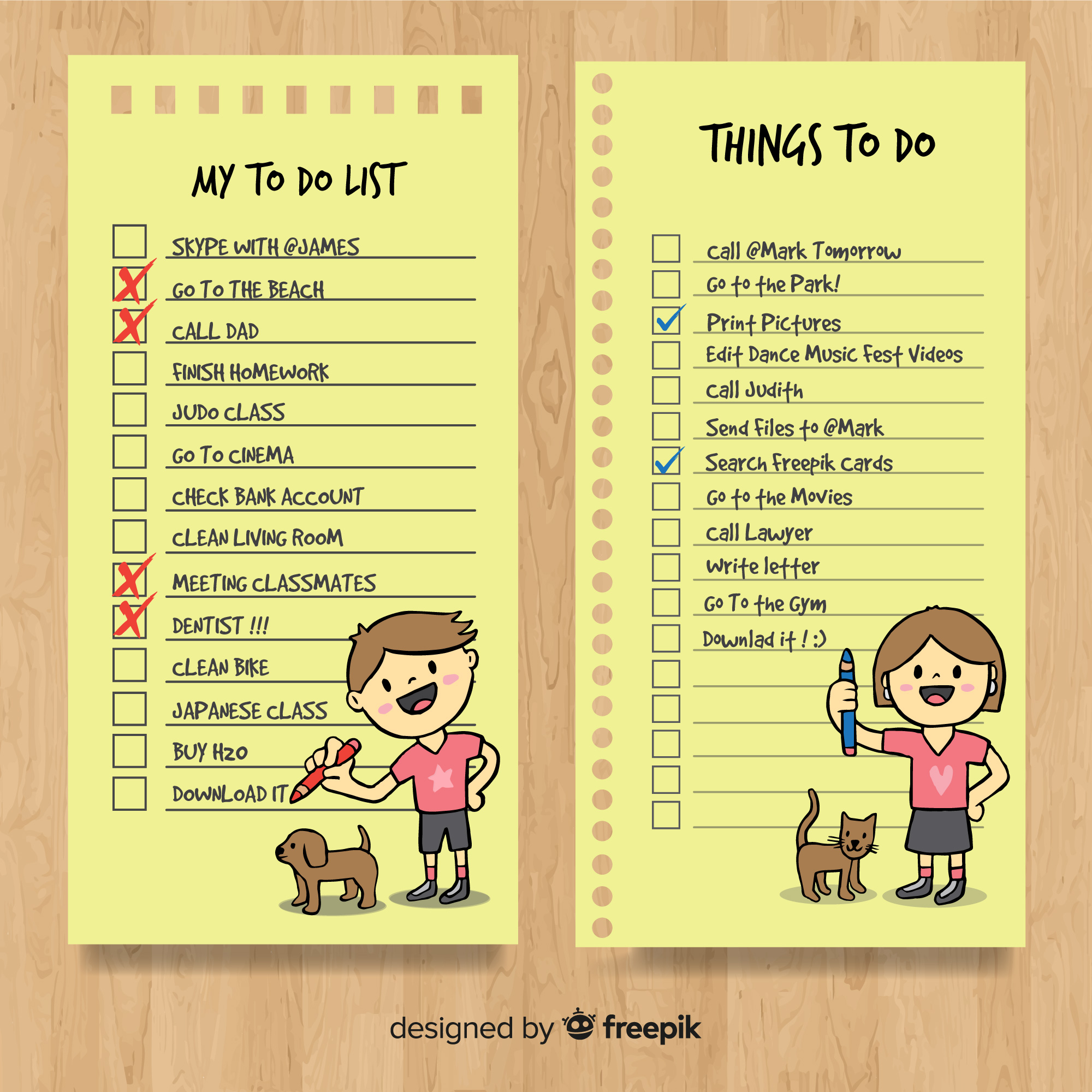TL;DR
Classroom management is the foundational force that shapes productive, engaging, and respectful learning environments for K-12 students. This comprehensive guide examines the key strategies, techniques, and tools that enable educators to cultivate such environments. It begins by exploring actionable techniques, including modeling desired behaviors through role-playing and consistent actions, using non-verbal cues (e.g., seating arrangements, visual signals, and teacher body language) to guide behavior, and addressing disruptions promptly and constructively. Research-backed strategies are highlighted, such as involving students in creating rules to enhance compliance, establishing predictable routines to reduce anxiety, and providing specific praise and personalized support to foster ownership and belonging. The guide also addresses developmental differences, with tailored approaches for elementary students (e.g., visual rules, hands-on learning, token economies) and secondary students (e.g., student-led learning, flexible policies, restorative practices). It concludes with an overview of essential tools, both low-tech (e.g., popsicle sticks, exit tickets) and digital (e.g., ClassDojo, NearHub Rooms), that streamline management tasks. By emphasizing flexibility and student-teacher collaboration, the guide underscores that effective classroom management is not a one-size-fits-all solution but a dynamic practice that nurtures connection, engagement, and academic success for all students.
What makes the buzz of excited voices collaborating on a project feel electric, not chaotic?
What turns the hush of students lost in a book into a sanctuary of focus, not a void of apathy?
What kindles that spark in a learner’s eye when a concept clicks—and keeps it from fizzling into restlessness?
These moments—vibrant, focused, alive—don’t happen by chance. They’re crafted by classroom management: the invisible force that turns chaos into community, distraction into engagement, and a room of individuals into a team of learners.
This guide unpacks the strategies, tools, and techniques that make such moments possible, empowering K-12 educators to build classrooms where every student thrives.

Effective Classroom Management Techniques: From Theory to Practice
Classroom management techniques are the actionable steps educators take to maintain order, engagement, and respect. These strategies are rooted in understanding student psychology and leveraging human behavior principles to create a productive learning environment.
Modeling Ideal Behavior: The Power of “Show, Don’t Just Tell”
Children learn as much from what they see as what they hear—and this is especially true in the classroom. When teachers model the behaviors they wish to see, they create a silent curriculum that reinforces expectations. For example, a teacher who listens actively to a student’s question (nodding, making eye contact, and paraphrasing to confirm understanding) teaches students how to engage in respectful dialogue. Similarly, a teacher who admits a mistake (“I miscalculated that problem—let’s fix it together”) models accountability, encouraging students to take ownership of their errors.

Practical applications:
● Role-playing scenarios: Before a group project, act out a conflict between team members like “I don’t like your idea” and demonstrate constructive responses (“Let’s hear each other out first”).
● “Think-aloud” moments: When solving a problem, verbalize your thought process (“I need to check the data again—maybe I missed something”) to show students how to approach challenges methodically.
● Consistency in small actions: Greeting students by name at the door, using “please” and “thank you,” and cleaning up shared supplies sets a standard for mutual respect.
Educational psychologist Dr. Richard Curwin notes, “Students mirror the emotional tone of their teachers. A calm, respectful instructor creates a classroom where calm, respectful behavior becomes the norm.”
Leveraging Non-Verbal Communication: Beyond Words
Non-verbal cues—from body language to classroom design—often speak louder than rules posted on a wall. These subtle signals can guide student behavior, reduce distractions, and foster focus without a word.
Classroom design as a communication tool:
● Seating arrangements: Circular setups encourage discussion, while rows work better for lecture-style lessons. Flexible seating (bean bags, standing desks) allows students to choose environments that suit their focus needs, reducing restlessness.
● Visual cues: Color-coded zones (e.g., red for quiet work, green for group activities) help students understand expectations at a glance. A “noise meter” poster—with icons from a whisper to a shout—lets students self-regulate volume.
● Lighting and decor: Soft, natural light reduces eye strain and irritability, while clutter-free walls (with only essential posters) prevent over stimulation—critical for younger students or those with attention challenges.

Teacher body language:
1. Moving deliberately around the classroom (instead of staying at the front) signals approach-ability and keeps students alert.
2. Making eye contact with distracted students (without stopping instruction) gently redirects their focus.
3. Smiling and nodding during student contributions reinforces participation, even when the answer is incomplete.
A 2022 study in Educational Psychology Review found that classrooms with intentional non-verbal cues saw a 22% reduction in minor disruptions, as students intuitively understood expectations.
Quick Response to Inappropriate Behavior: Stopping Small Issues Before They Grow
Even the best-managed classrooms face disruptions—but how teachers respond can mean the difference between a fleeting distraction and a full-blown crisis. The key is to address issues promptly, privately, and constructively, preserving the student’s dignity while reinforcing boundaries.

Strategies for different scenarios:
● Minor disruptions (whispering, fidgeting): Use proximity control (standing near the student) or a silent signal (a gentle tap on the desk, a thumbs-up gesture to refocus). This corrects the behavior without interrupting the lesson.
● Persistent distractions (repeated talking, off-task devices): Pull the student aside during a transition (e.g., group work time) and use “I” statements to frame the issue: “I’ve noticed it’s hard to focus when the group is talking—let’s find a spot where you can stay on track.” Avoid public scolding, which often leads to defensiveness.
● Major disruptions (disrespect, aggression): Safety comes first. Calmly separate the student from the situation (e.g., “Let’s step outside to talk”) and address the behavior privately. Later, collaborate on a plan to prevent recurrence: “What can we do next time you feel frustrated?”
Dr. Jane Nelsen, co-author of Positive Discipline, advises: “Punishment makes students feel bad about themselves; firm, kind responses make them feel capable of doing better.” This approach not only stops disruptions but also teaches problem-solving skills.
Research-Backed Classroom Management Strategies: Building a Foundation for Success
Effective classroom management is not guesswork—it is grounded in decades of educational research. These strategies focus on empowering students, fostering ownership, and creating a sense of belonging.
Universal Strategies for Whole-Class Management
These approaches set the tone for the entire classroom, creating a shared culture of respect and responsibility.

● Co-created rules: Instead of dictating rules, involve students in drafting them. For example, ask: “What do we need to feel safe and able to learn?” Students might suggest, “Raise hands to speak” or “Listen when others share.” Post the final list and revisit it periodically. This ownership makes students more likely to follow rules—research shows classrooms with student-led guidelines have 30% higher compliance rates (Journal of Educational Research, 2021).
● Consistent routines: Predictable schedules reduce anxiety and confusion. For example: “Each morning, we’ll start with a check-in circle, then 20 minutes of independent reading, followed by math.” Post a visual schedule (with pictures for younger students) so everyone knows what to expect.
● Specific praise: Generic compliments (“Good job!”) feel hollow. Instead, highlight effort and details: “I noticed you helped Maria figure out the problem—that’s teamwork!” This reinforces positive behavior and tells students exactly what they did well.
● Positive reinforcement systems: Small rewards (stickers, extra recess minutes, a “student of the week” certificate) can motivate, but they work best when tied to effort, not just outcomes. For example, a student who struggles with math but persists on a tough problem deserves recognition, even if they don’t get the answer right.
Strategies for Individual Student Support
Every student is unique—some thrive in group settings, others need quiet focus; some respond to praise, others to challenges. Tailoring support to individual needs ensures no one falls through the cracks.

● Student interest inventories: At the start of the year, ask students about their hobbies, strengths, and struggles (e.g., “What’s something you love learning about?” or “What makes school hard for you?”). Use this data to personalize lessons: A student who loves basketball might practice fractions by calculating player stats; a shy student might share ideas via a written note before speaking aloud.
● Peer teaching: Pair students of varying abilities to explain concepts to each other. For example, after a lesson on photosynthesis, ask: “Teach your partner how plants make food, using your own words.” This builds confidence in advanced students and reinforces understanding for others. A 2020 study found peer teaching improved engagement by 40% in middle school classrooms.
● Gamification: Turn learning into a low-stakes game to boost motivation. For example, create a “classroom quest” where teams earn points for participation, helping peers, or meeting goals. Use a visible tracker (a poster, digital leaderboard) to celebrate progress. Gamification works because it taps into students’ intrinsic desire for achievement—without the pressure of grades.
● Morning meetings: Start each day with a 10-minute circle time to build community. Activities might include: sharing good news, solving a “mystery question” (e.g., “What’s one thing you’re nervous about this week?”), or practicing a social skill (e.g., giving compliments). This routine fosters connection, making students more likely to support each other—and follow rules.
Research from the University of Minnesota shows that individualized strategies reduce office referrals by 50% and improve academic engagement, as students feel seen and supported.
Classroom Management in K-12 Settings: Tailoring Approaches to Developmental Stages
What works for a kindergartener will not work for a high school senior. Effective classroom management adapts to students’ cognitive, emotional, and social needs as they grow.

Elementary School (K-5): Building Foundations with Structure and Play
Young children thrive on routine, concrete rules, and positive reinforcement. Their developing self-regulation skills require clear guidance and frequent reminders.
● Simplified, visual rules: Post 3-5 rules with pictures (e.g., a drawing of hands raised, a quiet symbol) instead of long lists. Review them daily—sing a “rules song” or act them out to make memorization fun.
● Hands-on learning: Young students have short attention spans; sitting still for 45 minutes is unrealistic. Incorporate movement: math problems written on the floor (students jump to solve them), spelling words acted out as charades, or “brain breaks” (1-minute dance parties). These activities burn energy and reset focus.
● Token economies: Use stickers, stamps, or “classroom dollars” to reward positive behavior. Students exchange tokens for small prizes (extra recess, choosing a book to read aloud) or a class party when the group reaches a goal. This immediate feedback motivates young learners.
● Predictable transitions: Moving from math to reading can cause chaos. Use songs, timers, or “transition cards” (e.g., “Put away your math folder and get your reading book”) to signal changes. For example, play a 2-minute song—when it ends, everyone should be ready.
First-grade teacher Ms. Rodriguez shares: “My students thrive on knowing what’s next. Our daily schedule is posted with pictures, and we practice transitions until they’re smooth. It cuts down on ‘What do I do now?’ questions—so we can focus on learning.”

Middle and High School (6-12): Balancing Autonomy with Structure
Adolescents crave independence and respect. They resist being “controlled” but still need clear boundaries to thrive. Classroom management here focuses on trust, choice, and relevance.
● Student-led learning: Give students ownership of lessons. For example, assign a history topic and let groups design a presentation (PowerPoint, skit, podcast) to teach the class. This responsibility reduces disruptions, as students are invested in their work.
● Flexible policies: Instead of strict “no phone” rules, create nuanced guidelines: “Phones are off during lectures but can be used for research during group work.” This trust acknowledges students’ maturity and reduces rebellion.
● Academic relevance: Adolescents ask, “Why does this matter?” Connect lessons to their lives. A physics teacher might link projectile motion to sports: “How does this affect a basketball shot?” A literature teacher could explore themes of identity in a novel through a class discussion on social media. Relevant lessons boost engagement—and reduce off-task behavior.
● Restorative practices: When conflicts arise, use circles to address harm. For example, after a argument, students sit in a circle and answer: “What happened?” “How did it affect you?” “What can we do to make it right?” This approach teaches accountability and preserves relationships—critical for teen social development.
High school math teacher Mr. Chen explains: “My students push back if they feel rules are arbitrary. But when they understand ‘This policy helps us all learn,’ they buy in. It’s about partnership, not authority.”
Essential Classroom Management Tools and Software: Equipping Educators for Success
From low-tech staples to cutting-edge apps, the right tools can streamline management, saving teachers time and energy.
Low-Tech Tools: Tried-and-True Solutions
Sometimes the simplest tools are the most effective—no Wi-Fi required.

● Behavior clip charts: A visual tracker where students move clips up (for positive behavior) or down (for missteps). Elementary students love seeing their progress, and the chart provides instant feedback.
● Popsicle sticks: Write student names on sticks and draw them to call on participants. This ensures everyone is prepared to contribute, reducing “hiding” in the back.
● Classroom jobs: Assign roles like “door holder,” “supply manager,” or “tech helper.” These responsibilities build ownership and teach teamwork—plus, they lighten the teacher’s load.
● Exit tickets: A quick 1-question paper handed in at the end of class: “What confused you today?” or “Name one thing you learned.” This feedback helps teachers adjust lessons—and keeps students focused until the bell.
Digital Tools and Software: Enhancing Efficiency and Engagement
Technology can automate tasks, track progress, and boost interaction—freeing teachers to focus on relationships.
● ClassDojo: A popular app that tracks behavior in real time. Teachers award “points” for positive actions (participation, kindness), and parents can view updates. Students earn badges, turning management into a game.
● Prodigy: A math game that adapts to student skill levels. It keeps kids focused during independent work, as they solve problems to progress in the game. Teachers can monitor progress and identify gaps—all while students think they’re “playing.”
● NearHub Rooms: Leverage its multi-screen interaction feature to double the fun and engagement in the classroom. During group projects, for instance, each group can be assigned an independent screen to showcase their progress. In a history lesson about ancient civilizations, one group displays a timeline, another shows a map, and a third presents a student-created video. Students rotate to view each screen, leaving comments or questions, which naturally fosters discussion and a sense of accountability, thus completely revolutionizing the classroom dynamic.
● NearHub Decode: It supports decoding of multiple signal sources, making “multi-screen collaboration” in the classroom more stable! It can simultaneously connect to teaching videos, courseware documents, and student interaction terminals, enabling smooth switching of complex content without lag. Whether the main screen is used for teaching theories and the secondary screen for showing case videos, or different learning resources are displayed on group screens, it ensures clear images and efficient transmission.
The key is balance: digital tools should complement, not replace, human connection. A 2023 survey from UNESCO found that teachers who use 2-3 targeted tech tools report 38% less time spent on administrative tasks—time they can redirect to teaching.
Conclusion: Crafting Your Unique Classroom Management Style
Classroom management is not a one-size-fits-all formula—it is a reflection of your teaching philosophy, students’ needs, and the unique culture of your classroom. Whether you lean into non-verbal cues, student-led rules, or tools like NearHub Rooms, the goal remains the same: to create a space where students feel safe, engaged, and eager to learn.
Remember, even the best strategies need flexibility. A technique that works in September might falter in April as students grow and dynamics shift. Stay curious, observe what resonates, and involve your students in refining your approach. After all, the most effective classrooms are co-created—by teachers and the students who call them home.
As education expert Rita Pierson once said: “Every child deserves a champion—an adult who will never give up on them, who understands the power of connection, and insists that they become the best they can possibly be.” Classroom management is the tool that turns this vision into reality.









